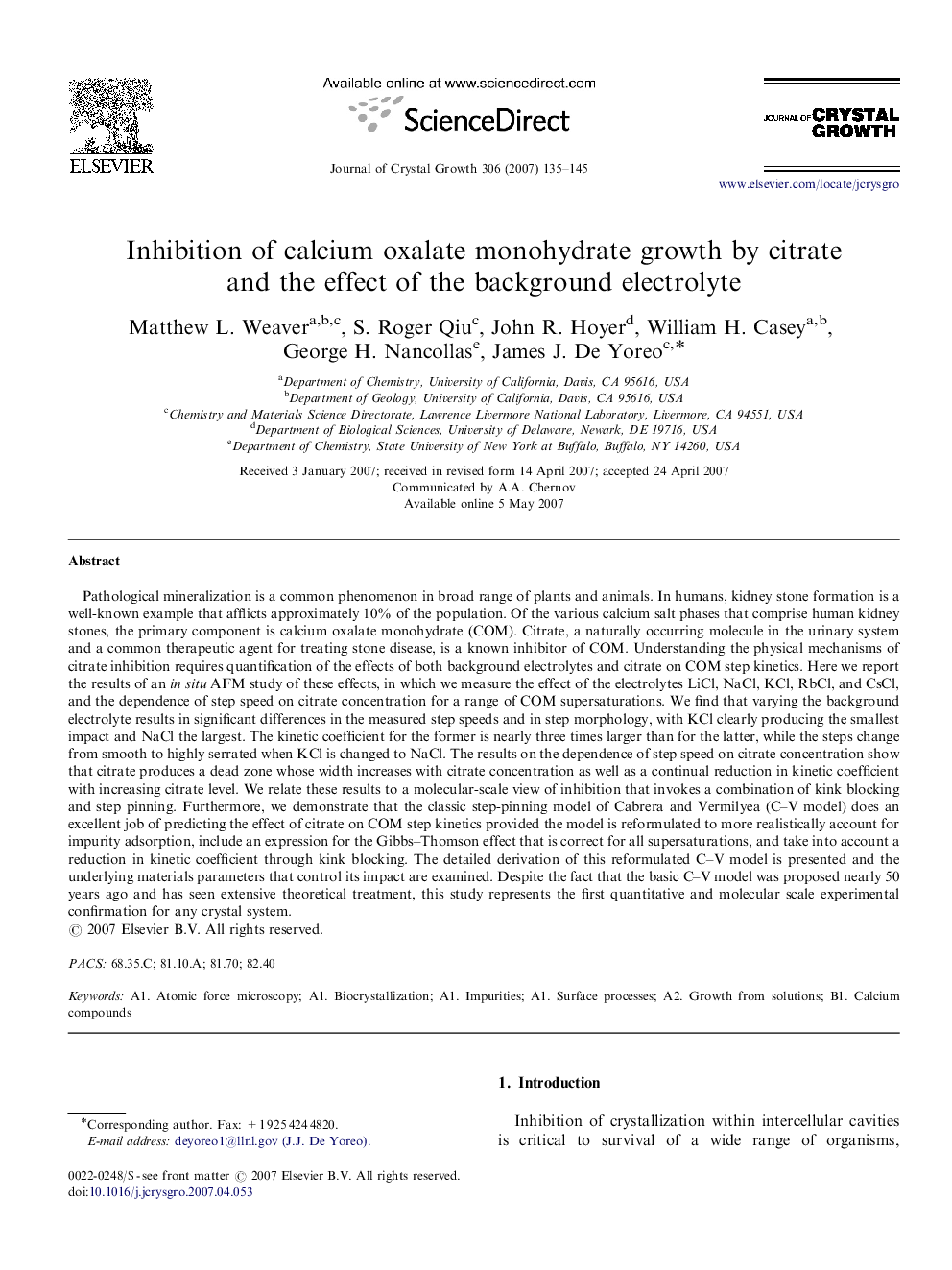| کد مقاله | کد نشریه | سال انتشار | مقاله انگلیسی | نسخه تمام متن |
|---|---|---|---|---|
| 1796319 | 1023741 | 2007 | 11 صفحه PDF | دانلود رایگان |

Pathological mineralization is a common phenomenon in broad range of plants and animals. In humans, kidney stone formation is a well-known example that afflicts approximately 10% of the population. Of the various calcium salt phases that comprise human kidney stones, the primary component is calcium oxalate monohydrate (COM). Citrate, a naturally occurring molecule in the urinary system and a common therapeutic agent for treating stone disease, is a known inhibitor of COM. Understanding the physical mechanisms of citrate inhibition requires quantification of the effects of both background electrolytes and citrate on COM step kinetics. Here we report the results of an in situ AFM study of these effects, in which we measure the effect of the electrolytes LiCl, NaCl, KCl, RbCl, and CsCl, and the dependence of step speed on citrate concentration for a range of COM supersaturations. We find that varying the background electrolyte results in significant differences in the measured step speeds and in step morphology, with KCl clearly producing the smallest impact and NaCl the largest. The kinetic coefficient for the former is nearly three times larger than for the latter, while the steps change from smooth to highly serrated when KCl is changed to NaCl. The results on the dependence of step speed on citrate concentration show that citrate produces a dead zone whose width increases with citrate concentration as well as a continual reduction in kinetic coefficient with increasing citrate level. We relate these results to a molecular-scale view of inhibition that invokes a combination of kink blocking and step pinning. Furthermore, we demonstrate that the classic step-pinning model of Cabrera and Vermilyea (C–V model) does an excellent job of predicting the effect of citrate on COM step kinetics provided the model is reformulated to more realistically account for impurity adsorption, include an expression for the Gibbs–Thomson effect that is correct for all supersaturations, and take into account a reduction in kinetic coefficient through kink blocking. The detailed derivation of this reformulated C–V model is presented and the underlying materials parameters that control its impact are examined. Despite the fact that the basic C–V model was proposed nearly 50 years ago and has seen extensive theoretical treatment, this study represents the first quantitative and molecular scale experimental confirmation for any crystal system.
Journal: Journal of Crystal Growth - Volume 306, Issue 1, 1 August 2007, Pages 135–145